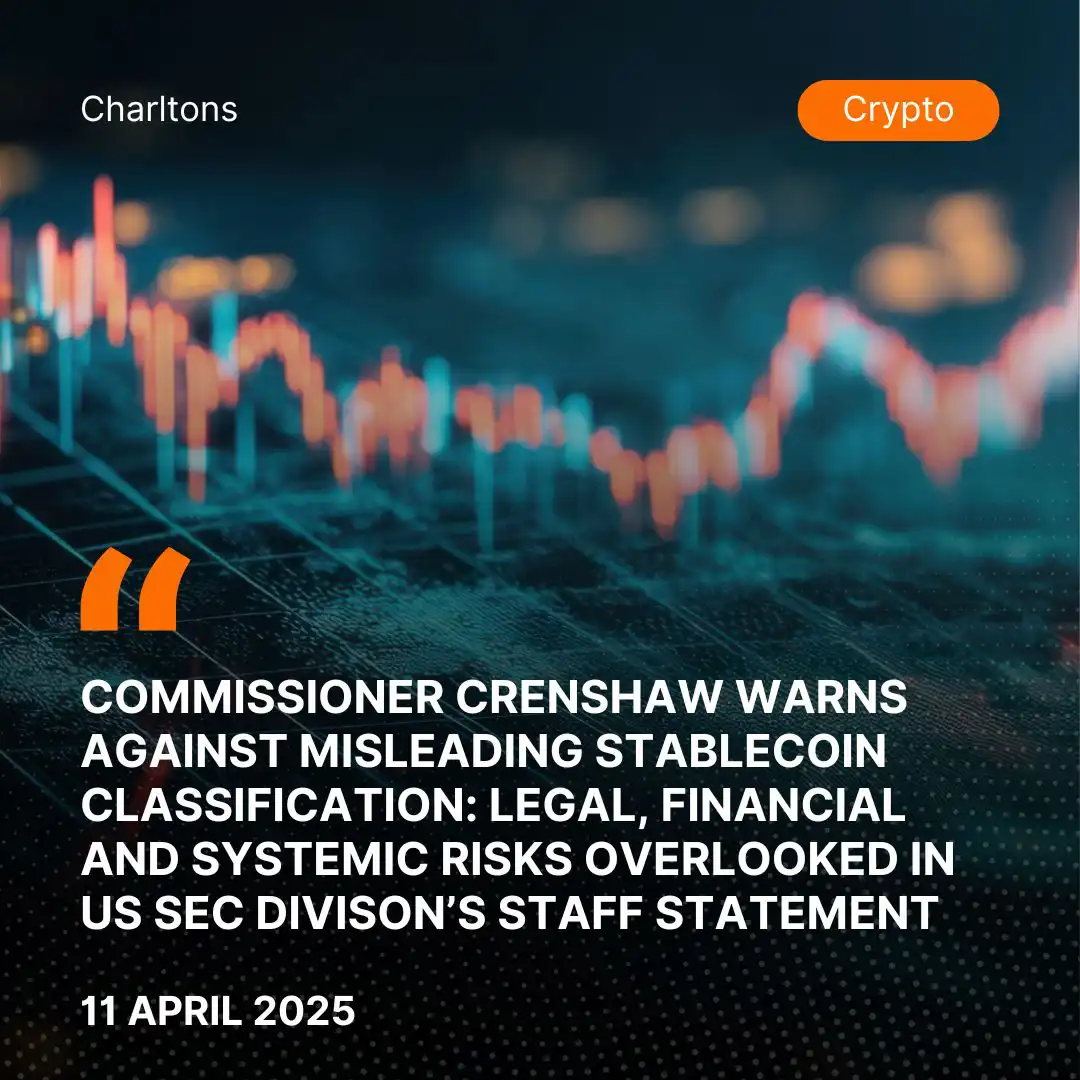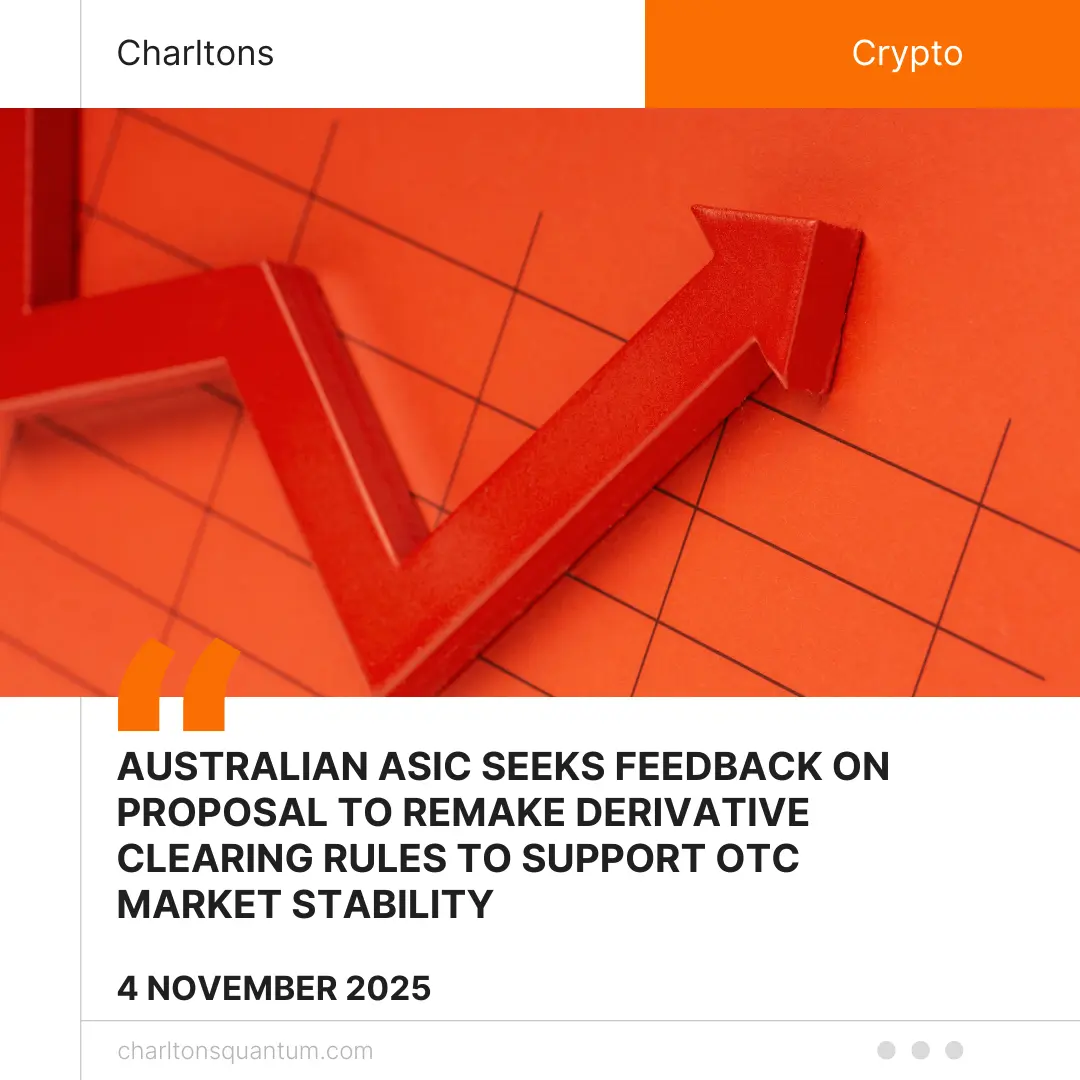
On 04 April 2025, Commissioner Caroline A. Crenshaw of the United States Securities and Exchange Commission (US SEC) issued a pointed critique titled “Stable” Coins or Risky Business? of the Division of Corporation Finance’s statement on Stablecoin crypto regulation, particularly its classification of certain USD-stablecoins as non-securities. Crenshaw challenges the legal basis and factual assumptions and stating as potentially dangerous precedent being set in underestimating risks and overstating investor protections in a market increasingly dependent on intermediaries. Crenshaw’s According to her, these stablecoins are uncollateralised, uninsured, largely inaccessible to retail investors for direct redemption, and susceptible to runs and challenges the US SEC staff’s analysis concluding that certain USD-stablecoins are not securities. She argues that the staff’s reasoning omits critical risk factors, misrepresents redemption mechanisms, and fails to satisfy the legal standards under the Reves v. Ernst & Young test. The critique frames the staff’s conclusions as legally erroneous, factually incomplete, and systemically harmful.
Much of the US SEC staff’s analysis is premised on issuer actions that supposedly stabilize price, ensure redeemability, and otherwise reduce risk. Staff also acknowledges, albeit briefly, that some USD-stablecoins are available to retail purchasers only through an intermediary and not directly from the issuer. But it is the general rule, not the exception, that these coins are available to the retail public only through intermediaries who sell them on the secondary market, such as crypto trading platforms. Over 90% of USD-stablecoins in circulation are distributed in this way. Holders of these coins can redeem them only through the intermediary. If the intermediary is unable or unwilling to redeem the stablecoin, a holder has no contractual recourse against the issuer. The role of intermediaries, particularly unregistered trading platforms, as primary distributors of USD-stablecoins poses a panoply of significant, additional risks that US SEC staff does not consider.
US SEC staff fails to unpack the consequences of this market structure and how it affects risk. The fact that intermediaries conduct most retail USD-stablecoin distribution and redemption significantly diminishes the value of the issuer actions staff relies on as “risk-reducing features.” Key among these features is an issuer asset reserve that staff describes as designed to “satisfy fully their redemption obligations,” i.e., with enough assets to pay out a $1 redemption for each outstanding coin. But generally speaking, as described above, issuers have no “redemption obligations” to retail coin holders. These holders have no interest in or right to access the issuer’s reserve. If they redeem coins through an intermediary, they are paid by the intermediary, not from the issuer’s reserve. The intermediary is not obligated to redeem a coin for $1 and will instead pay the holder the market price. Retail coin holders therefore do not, as US SEC staff claims, have a “right” to “redemption for USD on a one-for-one basis.”
It is also grossly inaccurate for US SEC staff to suggest that just because an issuer’s reserve is, at some point, somehow valued at or above the par value of its outstanding coins, the issuer has sufficient reserves to satisfy unlimited redemption requests (from intermediaries or coin holders) at any future time. First, the issuer’s overall financial health and solvency cannot be judged by the value of its reserve, which tells us nothing about its liabilities, risk from proprietary financial activities, and so forth. Second, there is always a risk, particularly in times of market stress or if the price of a stablecoin drops, of a “run” scenario where intermediaries and/or issuers cannot honor all redemption requests in real time. This leads to a “self-reinforcing cycle of redemptions and fire sales of reserve assets.” Major run events have already occurred with USD-pegged stablecoins, with significant consequences for the broader stablecoin market and the traditional banking system.
US SEC staff further overstates the assurance value of issuer reserves by claiming that some issuers publish reports, called “proof of reserves,” that “demonstrate that a stablecoin is backed by sufficient reserves.” As the United States Securities and Exchange Commission and the Public Company Accounting Oversight Board (PCAOB) have warned, proof of reserve reports demonstrate no such thing. Their content is unregulated, not subject to PCAOB standards, and determined entirely at the issuer’s discretion. They are “typically [ ] not designed to” and “often provide no assurance as to the reliability of the information provided.” Other regulators have similarly warned of the general lack of transparency and reliability in how stablecoin reserves are invested, managed, and valued. Whatever claims issuers make about their reserves, stablecoin holders have unfortunately learned the hard way that these claims often turn out to be false.
Understanding these facts, it becomes clear that as a legal matter, US SEC staff is simply wrong that the issuer’s reserve is a “risk-reducing” feature under the United States Supreme Court’s Reves test. Risk-reducing features under Reves include collateralization, insurance, or federal regulatory oversight. Because retail coin holders generally have no right to access the issuer’s reserve to guarantee redemption at any price, let alone $1, the reserve does not “collateralize” stablecoins held by the retail public. Without a redemption right against the issuer, a retail stablecoin holder has no claim in a bankruptcy proceeding, as an unsecured creditor or otherwise, if the issuer becomes insolvent. Just like the product at issue in Reves, USD-stablecoins are “uncollateralized and uninsured.” Even intermediaries responsible for retail redemptions may not be secured creditors of the issuer, meaning they too would have limited or no ability to recover directly from the reserve if the issuer declares bankruptcy. The contractual arrangements between issuers and intermediaries are bespoke and generally non-public, leaving retail coin holders (and regulators) in the dark.
The statement also presents a practical problem: what if any existing stablecoins actually meet the stated criteria and fall within the US SEC staff’s definition of “Covered Stablecoin”? It is hard to even understand what staff’s criteria are because the statement is written as though issuers have redemption obligations directly to retail coin holders when in general, they do not. For example, staff claims that issuers stabilize the price because they “mint and redeem ‘Covered Stablecoins’ on a one-for-one basis with USD at any time and in unlimited quantities.” But staff fails to explain if or how that occurs in the typical case of a USD-stablecoin that is purchased and redeemed by retail holders only through intermediaries. To the extent distribution and redemption affect the retail market price, it is the intermediaries, not the issuers, whose actions matter. What are the practices and obligations of those intermediaries? Is that information disclosed to the retail public? US SEC staff gives us no idea.
These legal and factual flaws in the US SEC staff’s statement do a real disservice to USD-stablecoin holders, and, given the central role of stablecoins in the crypto markets, to crypto investors more generally. They feed a dangerous industry narrative about the supposed stability and safety of these products. This is perhaps best highlighted by the staff’s choice to parrot a highly misleading marketing term, “digital dollar,” to describe USD-stablecoins. Make no mistake: there is nothing equivalent about the United States dollar and unregulated, privately-issued crypto assets that are opaque (clearly even to the staff), uncollateralized, uninsured, and laden with risk at every step of their multi-layer distribution chain. They are risky business.
(Source: https://www.sec.gov/newsroom/speeches-statements/crenshaw-statement-stablecoins-040425)





